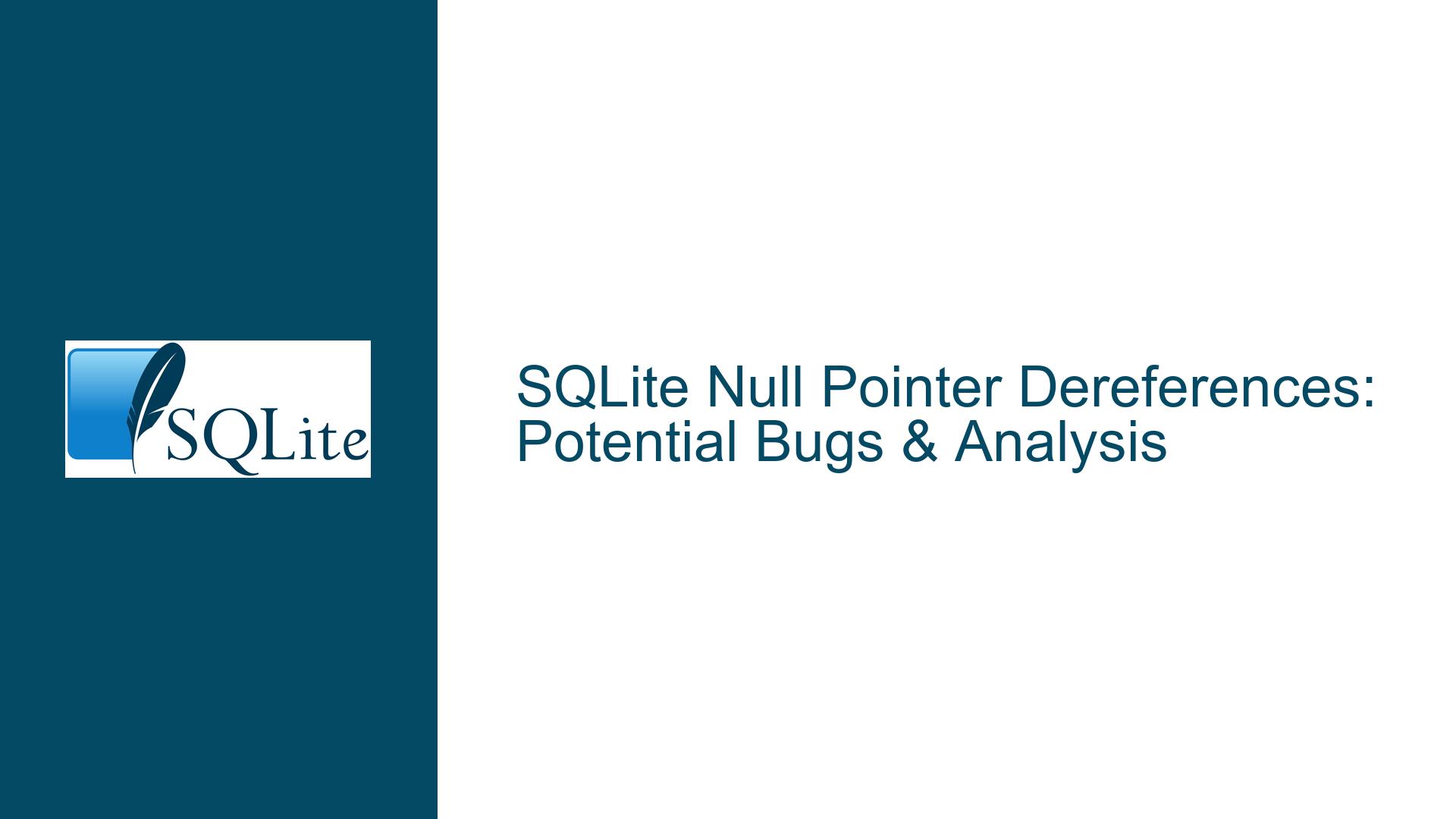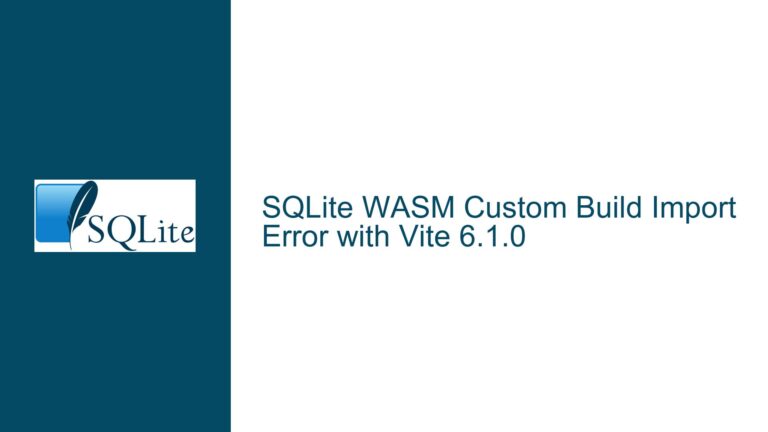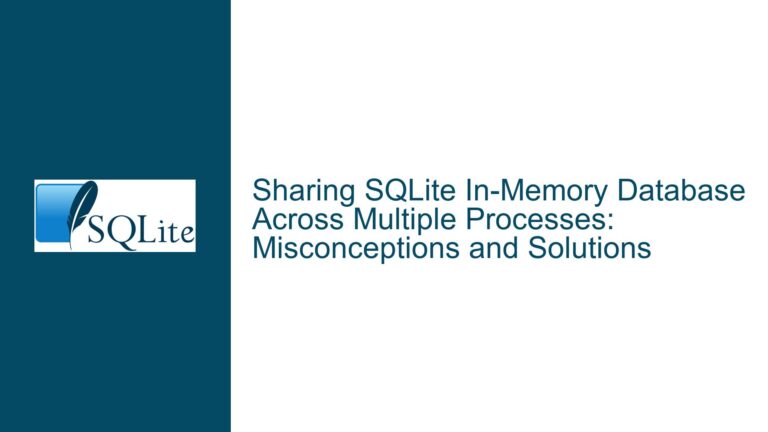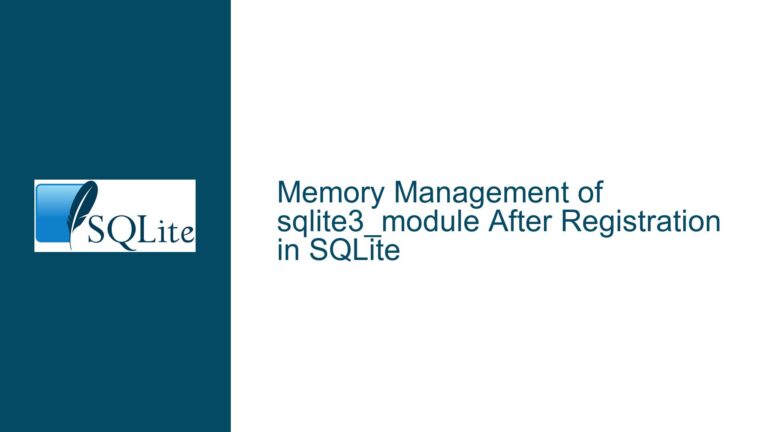SQLite Null Pointer Dereferences: Potential Bugs & Analysis
Understanding Null Pointer Dereference Vulnerabilities in SQLite Codebase
Null pointer dereferences represent a critical class of software vulnerabilities where program execution attempts to access memory through a pointer that holds a null value. In SQLite’s architecture, these issues manifest when database operations fail to validate pointer integrity before accessing virtual table components, VDBE (Virtual Database Engine) structures, or filesystem abstraction layers. The consequences range from immediate segmentation faults to subtle data corruption scenarios that may remain undetected until catastrophic system failure.
The reported instances span multiple subsystems within SQLite 3.22.0, revealing patterns in pointer handling across virtual table management, TCL interface bindings, and sorting algorithms. Key vulnerability points include:
1. sqlite3VtabCallDestroy Function (sqlite3.c:128391)
Virtual table destruction logic retrieves a module pointer via vtabDisconnectAll() without null-checking before accessing p->pModule. This creates crash potential when dismantling corrupted virtual table configurations.
2. dbReleaseStmt in TCL Interface (tclsqlite.c:1421)
The pPrev pointer traverses prepared statement objects in the TCL binding layer. Certain error paths leave pPrev uninitialized, leading to invalid memory access during statement cleanup operations.
3. vdbeSorterFlushPMA Optimization (sqlite3.c:89710)
External merge-sort implementation assumes pTask always references valid sorting context. Missing validation before accessing pTask->pSorter creates vulnerability in low-memory conditions during large dataset sorting.
4. Trigger Compilation Path (sqlite3CodeRowTriggerDirect:126110)
Obtaining VDBE handle through sqliteGetVdbe() may return null in constrained environments, yet subsequent sqlite3VdbeAddOp4() call directly uses the unvalidated pointer for trigger code generation.
5. Randomness Subsystem Initialization (sqlite3_randomness:27774)
Bootstrapping cryptographic routines relies on sqlite3_vfs_find() returning operational VFS object. Direct dereference in sqlite3OsRandomness() without fallback mechanism risks crash during early initialization phases.
6. Shell Input Processing (shell.c:14653)
Interactive shell’s zSql buffer maintains query state across multi-line inputs. Edge cases in input handling leave zSql null while attempting string processing operations.
7. Append VFS Initialization (shell.c:3949)
Extension virtual filesystem registration duplicates methods from underlying VFS without verifying sqlite3_vfs_find() success, creating null method table dereferences.
8. FTS3 Segment Merging (fts3IncrmergeChomp:163794)
Full-text search engine’s incremental merge procedure fails to validate pSeg iterator before accessing its internal structure during index compaction.
These vulnerabilities share common traits: reliance on subsystem initialization succeeding, insufficient error path cleanup, and assumptions about pointer validity in performance-critical code paths. The amalgamation build process compounds detection difficulty by merging source files and obfuscating original code structure through macro expansions.
Root Causes of Unchecked Pointer Operations in Database Engines
Static Analysis False Positives vs. Actual Memory Safety Violations
Automated code scanners frequently misidentify null dereference risks in SQLite due to several factors:
- Cross-Function Validation: Pointer checks may exist in caller functions or through macro indirection not visible to line-based analyzers
- Context-Specific Invariants: SQLite’s rigorous internal API contracts assume non-null values in performance-sensitive paths
- Amalgamation Build Artifacts: Generated sqlite3.c combines multiple sources, disrupting analyzer context about original code structure
Version-Specific Code Anomalies
SQLite 3.22.0 (2018) predates critical hardening efforts:
- Post-3.28.0 (2019) improvements in virtual table lifecycle management
- 3.31.0 (2020) added defensive pointer checks in VFS initialization
- 3.34.0 (2020) overhauled FTS3 segment merging logic
- Continuous fuzzing integration since 3.32.0 (2020)
Control Flow Complexity in Database Operations
Certain code paths evade null checks due to:
- Recovery-Oriented Programming: SQLite prioritizes error recovery over premature exits, assuming higher layers will handle exceptional states
- Multi-Layer Abstraction: VFS and virtual table APIs require coordinated null handling across interface boundaries
- Constrained Environment Assumptions: Embedded use cases mandate minimal overhead, discouraging redundant pointer validation
Build System Characteristics
The amalgamation build process:
- Merges 100+ source files into single sqlite3.c
- Inlines macros and helper functions
- Alters line numbering vs original source
- Obscures code provenance for static analyzers
Pointer Lifecycle Management Challenges
- Virtual Table Destruction: Asynchronous disconnects may race with schema changes
- Statement Object Caching: Prepared statement lists require careful ownership tracking
- Memory Pressure Handling: Emergency memory recovery paths can nullify pointers unexpectedly
Comprehensive Validation Strategy for SQLite Memory Safety
1. Version-Specific Analysis Protocol
- Upgrade to Trunk Build: Clone latest source from official Fossil repository:
fossil clone https://www.sqlite.org/src sqlite.fossil mkdir sqlite-trunk && cd sqlite-trunk fossil open ../sqlite.fossil - Cross-Reference Commit History: Use
fossil bisectto trace when potential vulnerabilities were addressed:fossil bisect reset fossil bisect good version-3.36.0 fossil bisect bad trunk - Rebuild with Debug Symbols:
CFLAGS="-g -DSQLITE_DEBUG" ./configure make clean && make sqlite3
2. Targeted Code Inspection Methodology
For each reported vulnerability location:
- Map Amalgamation Lines to Original Sources: Use
make targetsourceto extract individual preprocessed files - Establish Control Flow Graphs:
// Example: Tracing sqlite3VtabCallDestroy sqlite3VtabCallDestroy → vtabDisconnectAll → sqlite3DbFree(p->db, pVTab->azArg); → pMod->xDestroy(pVTab); - Verify Error Path Coverage: Instrument code with null injection:
// Temporary patch to force null returns #undef vtabDisconnectAll #define vtabDisconnectAll(db) ((db)->pVTab = NULL) - Execute Test Suite with Valgrind:
valgrind --track-origins=yes ./testfixture test/veryquick.test
3. Exploit Scenario Validation
Develop proof-of-concept triggers for each potential vulnerability:
-- For virtual table destruction path
CREATE VIRTUAL TABLE testvt USING non_existent_module;
PRAGMA writable_schema=ON;
INSERT INTO sqlite_master VALUES('table','testvt','testvt',0,'');
PRAGMA writable_schema=OFF;
DETACH DATABASE main; -- Force schema reload
4. Static Analysis Tuning
Enhance tool accuracy through:
- Compiler Annotation Hints:
SQLITE_PRIVATE SQLITE_NOINLINE void sqlite3VtabCallDestroy(Parse *pParse, Table *pTable){ if( pTable==0 ) return; // Add explicit null check VTable *p = vtabDisconnectAll(pParse->db, pTable); if( p==0 ) return; // Defense added p->pModule->xDestroy(p->pVtab); } - Cross-Function Data Flow Analysis: Track pointer provenance from allocation to dereference
- False Positive Suppression: Annotate intentional null checks with
// NOLINTmarkers
5. Defense-in-Depth Implementation
Apply protective coding practices:
- Pointer Validation Macros:
#define SAFE_ACCESS(ptr, member) ((ptr) ? (ptr)->member : NULL) - Mandatory Initialization:
Vdbe *v = sqlite3GetVdbe(pParse); assert( v!=0 && "VDBE must be initialized for triggers" ); - Error Injection Framework:
#ifdef SQLITE_TEST extern int g_inject_null_error; #define CHECK_NULL(ptr) if(g_inject_null_error++) return SQLITE_NOMEM #endif
6. Continuous Fuzzing Integration
Deploy automated vulnerability detection:
- LibFuzzer Harness:
extern "C" int LLVMFuzzerTestOneInput(const uint8_t *data, size_t size) { sqlite3_open(":memory:", &db); sqlite3_exec(db, (const char*)data, 0, 0, 0); sqlite3_close(db); return 0; } - Corpus Generation: Collect crash-inducing SQL patterns from community test cases
- Sanitizer Builds:
./configure CFLAGS="-fsanitize=address,undefined"
7. Community Engagement Protocol
- Bug Report Requirements:
- Trunk version analysis
- Pre-amalgamation source references
- Reproducible test case
- Valgrind/ASAN reports
- Contribution Process:
fossil diff --tk | tee patch.diff fossil commit -m "Add null checks in sqlite3VtabCallDestroy" - Security Disclosure Path: Email [email protected] with encrypted PGP details
8. Runtime Mitigation Techniques
For environments running legacy SQLite:
- Signal Handlers: Trap SIGSEGV and attempt recovery
void segv_handler(int sig) { sqlite3_interrupt(db); longjmp(env, 1); } - Memory Sanitizers: Preload ASAN libraries
LD_PRELOAD=/usr/lib/x86_64-linux-gnu/libasan.so.6 ./sqlite3 - Query Sanitization: Filter DDL statements containing virtual table operations
9. Code Review Checklist
Manual verification steps for critical paths:
- [ ] Verify sqlite3_vfs_find() return value checked before VFS method access
- [ ] Confirm all virtual table method pointers have null guards
- [ ] Validate prepared statement lists maintain sentinel nodes
- [ ] Audit FTS3 segment iterator initialization
- [ ] Test shell input processing with multi-line null queries
10. Monitoring and Regression Prevention
- Automated Build Verification:
./configure && make test && \ ./testfixture test/permutations.test sqllogictest - Coverage Analysis:
gcov -b sqlite3.gcda | grep "Taken at least once" - Release Candidate Validation: 72-hour burn-in period for new versions
Through systematic application of these validation techniques, developers can conclusively determine null pointer vulnerability status while contributing to SQLite’s robustness. The layered approach combining static analysis, dynamic testing, and runtime hardening addresses both immediate concerns and long-term code quality maintenance.






